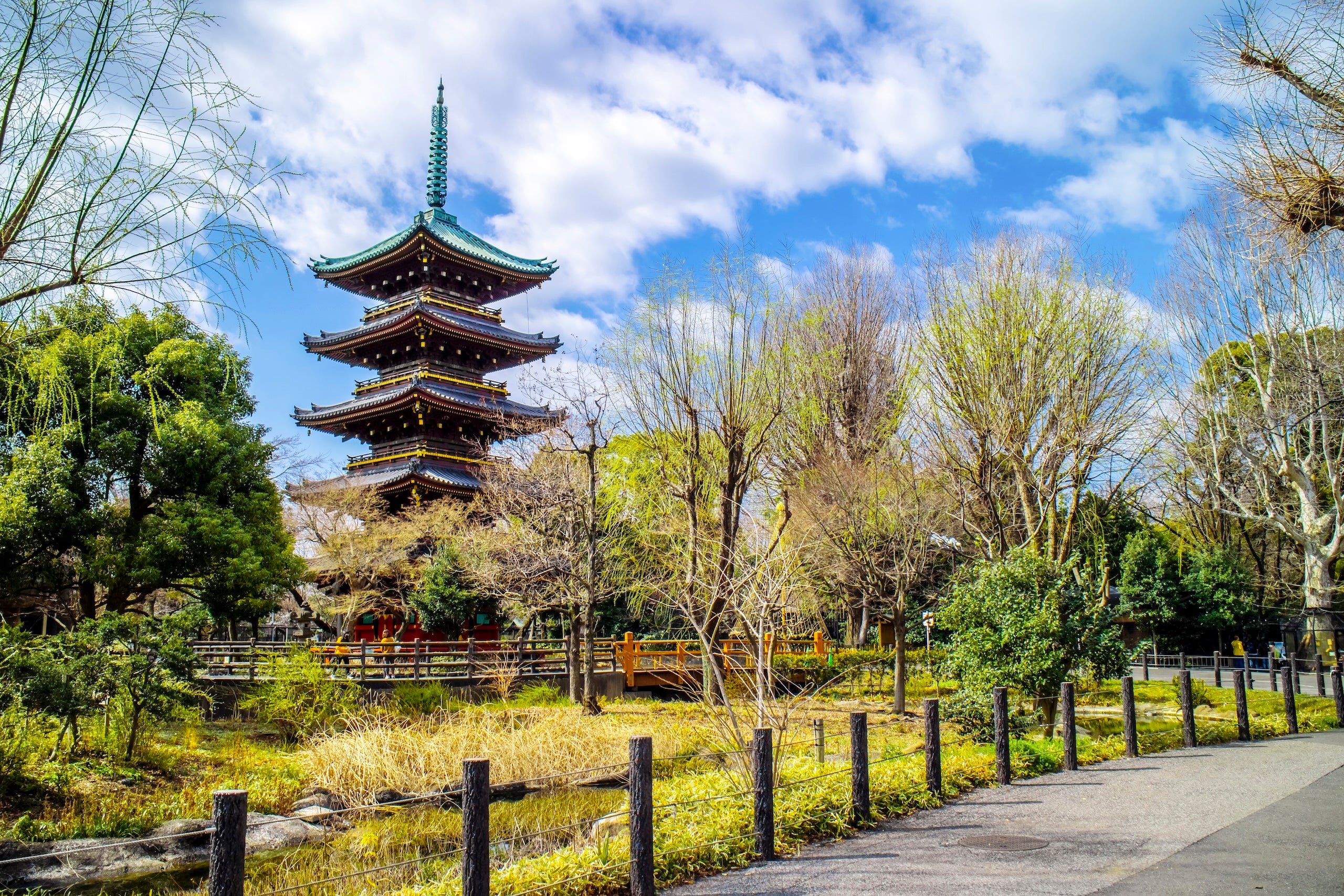Ueno Area



Imagining Edo as Kyoto… Reflect on the origins of Ueno, the development of its temple district, and the lives of the common people.
Ueno Park, which includes the National Museum and Tokyo University of the Arts, was once the grounds of Kan’ei-ji Temple during the Edo period. The temple was founded by Tenkai, a monk and close advisor to Tokugawa Ieyasu, in November 1625. Its purpose was to guard Edo Castle from the “kimon” (northeast) direction, considered an unlucky area, and to pray for the Tokugawa Shogunate’s prosperity.
Kan’ei-ji was modeled after Enryaku-ji on Mount Hiei in Kyoto and served as one of the Tokugawa family’s temples (which included the graves of the shoguns). The Ueno hill (plateau) was likened to Mount Hiei and named “Tōeizan Kan’ei-ji” (East Hiei Mountain). Kiyomizu Temple and Shinobazu Pond in the southwestern part of the park were modeled after Kiyomizu Temple and Lake Biwa in Kyoto. (Benzaiten on Nakajima in Shinobazu Pond is modeled after Benzaiten on Chikubu Island in Lake Biwa.)When Kan’ei-ji was founded, Tenkai not only constructed buildings but also focused on the landscape. He planted red pines near the current central fountain plaza, lotus flowers in Shinobazu Pond, and brought cherry saplings from Yoshino in Nara. The area became a popular retreat for Edo’s common people, offering seasonal beauty throughout the year.
Even today, Ueno Park is beloved for its spring cherry blossoms, summer lotus viewing, and autumn moon viewing.Whether you’ve already visited Kyoto or plan to, join our tour and experience the rich cultural heritage that has been preserved since the Edo period, and walk in the footsteps of the people who once lived in Edo.
Filters


